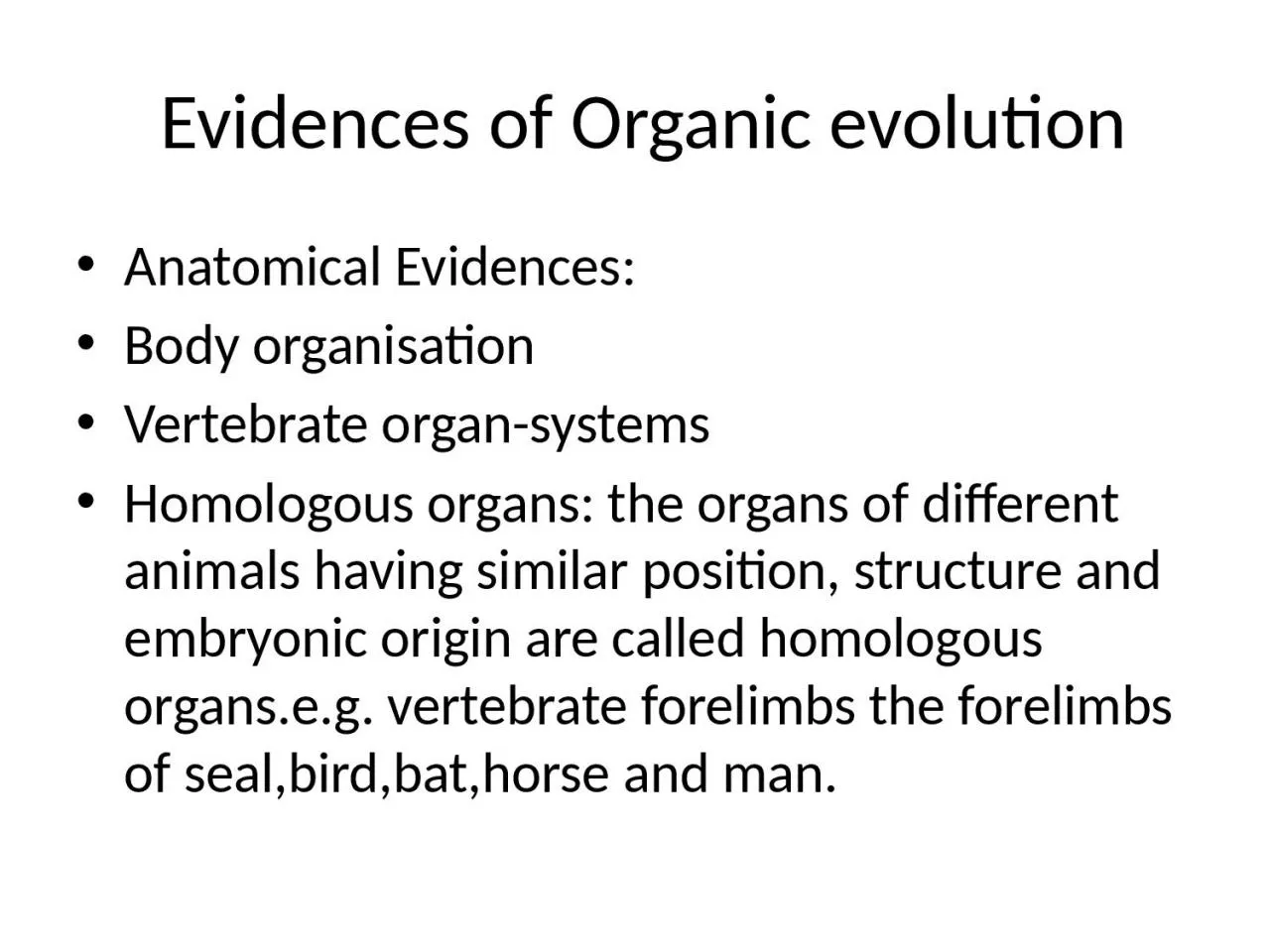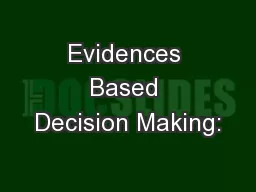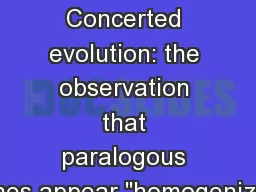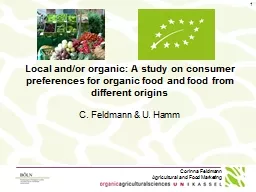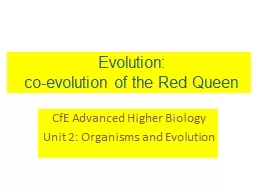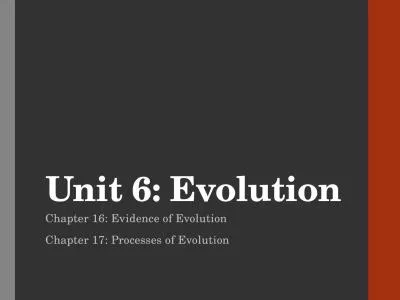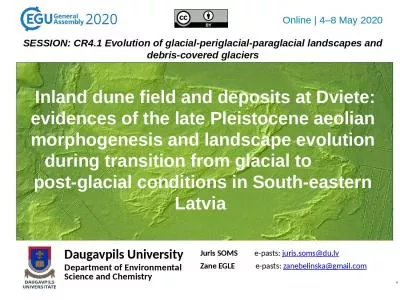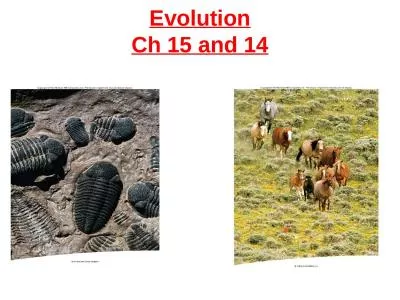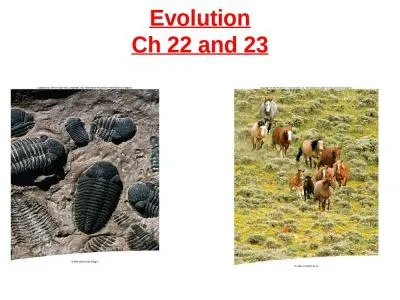PPT-Evidences of Organic evolution
Author : gagnon | Published Date : 2023-08-31
Anatomical Evidences Body organisation Vertebrate organsystems Homologous organs the organs of different animals having similar position structure and embryonic
Presentation Embed Code
Download Presentation
Download Presentation The PPT/PDF document "Evidences of Organic evolution" is the property of its rightful owner. Permission is granted to download and print the materials on this website for personal, non-commercial use only, and to display it on your personal computer provided you do not modify the materials and that you retain all copyright notices contained in the materials. By downloading content from our website, you accept the terms of this agreement.
Evidences of Organic evolution: Transcript
Download Rules Of Document
"Evidences of Organic evolution"The content belongs to its owner. You may download and print it for personal use, without modification, and keep all copyright notices. By downloading, you agree to these terms.
Related Documents

